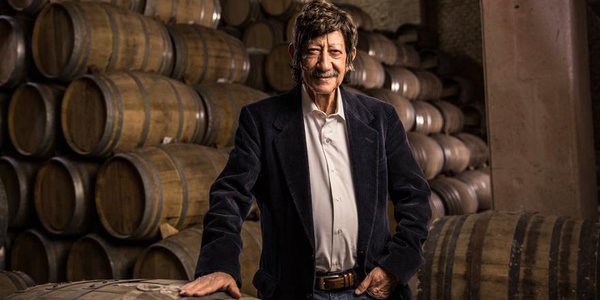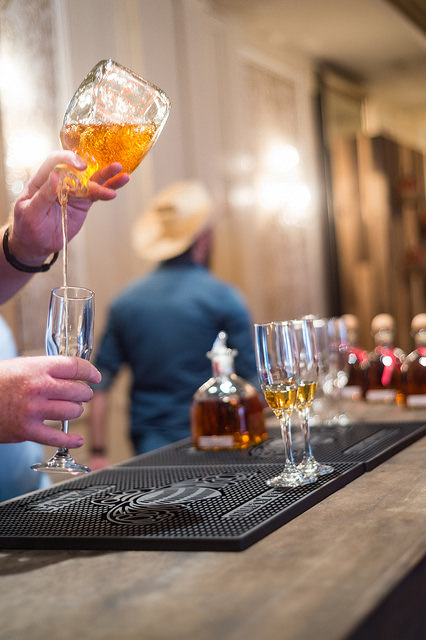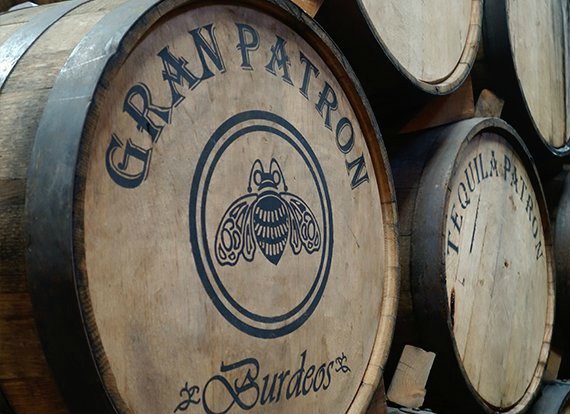Aging tequila imparts and enhances flavors, while different types of wood can bring out unexpected nuances in the spirit.
That’s the main reason why Patrón uses five different types of oak barrels to age its new Patrón Extra Añejo, which was released this fall, says Stephen Halpin, manager of trade, education and mixology for Patrón Spirits.
“They all add different complexities to the tequila,” Halpin says. “This really is the vision of master distiller Francisco Alcaraz and his production team.”
The five different types of barrels used for Patrón Extra Añejo are two types of French oak — from the Limousin and Allier forests in France; Hungarian oak, used American whiskey barrels, and hybrid new American oak barrels.
 Francisco Alcaraz and his team hand-select each barrel. Photo courtesy of Patron.
Francisco Alcaraz and his team hand-select each barrel. Photo courtesy of Patron.
The barrels from Allier gives dry, oaky notes with baked or dried fruit aromas while the Hungarian plays up the citrusy notes of the tequila, adding just hints of butter and caramel, Halpin points out. The Limousin oak, which has a tighter grain than the Allier oak, mellows the tequila out, while both American oaks smooth out the tequila and add light fruit and vanilla aromas, he says.
“The cool thing is, we have a barrel selection for extra añejo,” Halpin says. “Lots of people have barrel selection, but they don’t have as varied a selection as we have.”
Extra añejo is the most aged of all tequila types. Blanco or silver tequila is not aged, while reposado tequila is aged for a minimum of two months and up to 364 days. After 365 days, the tequila becomes añejo, and then after three years, it becomes extra añejo.

For the new Patrón Extra Añejo, all of the barrels have aged tequila for a minimum of three years. The individual barrels are all hand-selected by Alcaraz and his team, and each barrel is tasted carefully before the barrels are blended together to hit the exact right notes and flavor combinations.
“The blending process might take five barrels of one type combined with three of another year. The production team at Hacienda Patrón knows exactly what they’re looking for in each barrel,” Halpin says. “Francisco and his team taste it, and if the flavors aren’t coming out of the barrels, they switch them out.”
But even with all of the aging and flavoring action that goes on in the barrels, the quality of the spirit really starts with the tequila itself. “The barrels are supporting actors to the tequila,” Halpin says.
Patrón’s Extra Añejo, which retails for about $89, offers a diverse array of flavors for bartenders to accent and play with. Laura Newman, bartender at Dave’s Pub of Birmingham, Alabama, used the new tequila as inspiration to come up with a mole Old Fashioned, combining Patrón Extra Añejo with Punch alla Fiamma, mole bitters, and sorghum-sassafras bitters.
“I love whiskey, and to me, this is tequila for a whiskey drinker,” Newman says. “The extra añejo really lends itself to whiskey cocktails. It has great versatility but more drinkability. This cocktail really comes together naturally, based on the flavors from the oak.”
“The Patron Extra Añejo really does make a great Old Fashioned cocktail,” Halpin says, adding that home bartenders should experiment with the tequila in other whiskey-based drinks, too.






